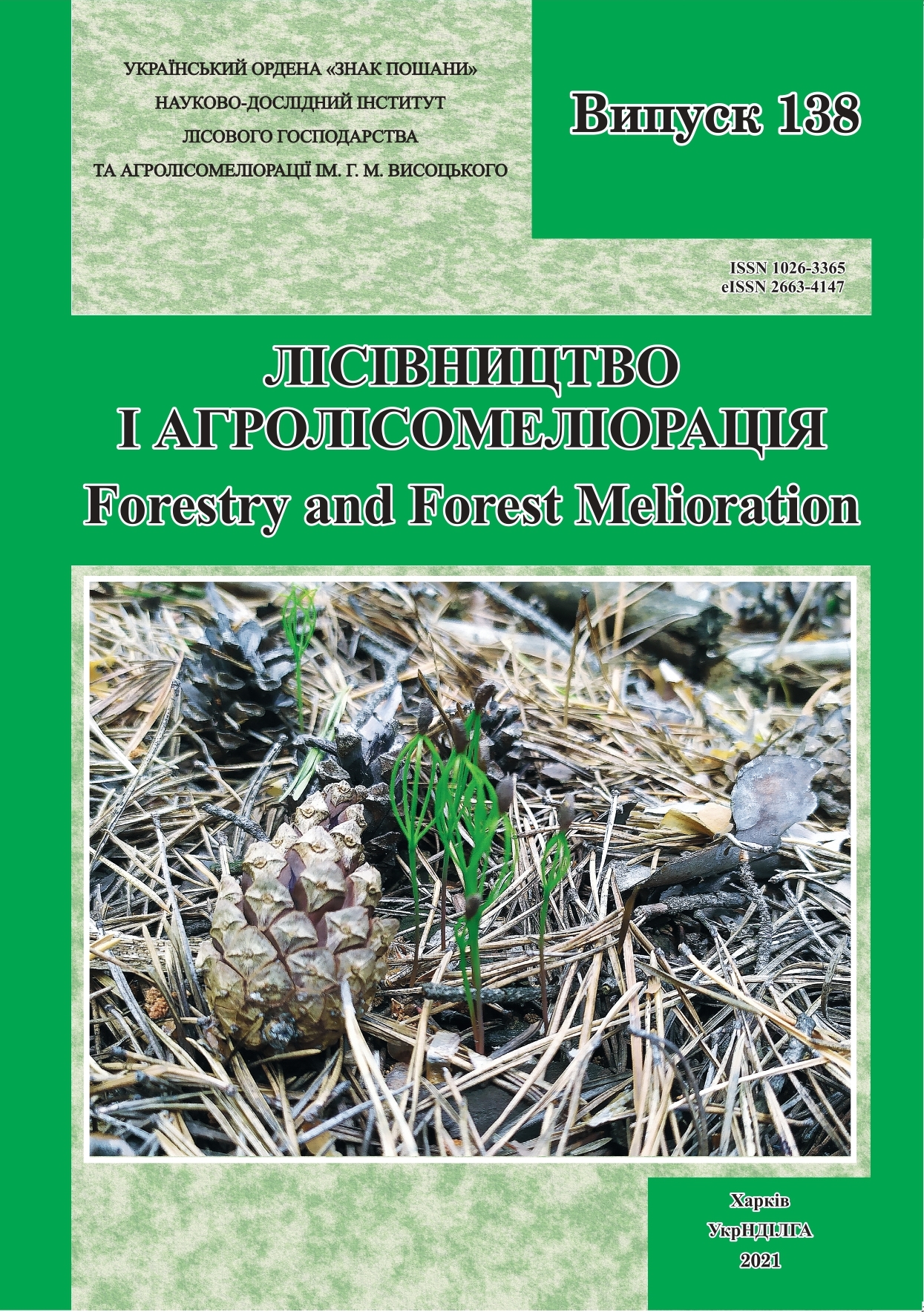Abstract
Introduction
Forest genetic reserves are considered as the combination of preservation and reproduction of the gene pool, which requires appropriate scientific and regulatory support. The aim of the study was to assess the dynamics in the state of forest genetic reserves (FGR) in state-owned enterprises of Poltava Region on the basis of the forest management data and identify the FGR for priority field examination. The complex methodology offered by the author was tested and used when analysing the genetic reserves state.
Materials and Methods
The research was done in 13 forest genetic reserves of 7 state forestry enterprises in Poltava Region with the total area of 953 ha. The proposed methodology uses a scoring scale for the evaluation of gene conservation units.
The following indicators were assessed: a proportion of the main species in the composition, the change in the main species proportion in the composition, a relative density of stocking, the change in the relative density of stocking, total wood volume (m3·ha-1), change in the total wood volume (m3·ha-1), volume by main species (m3·ha-1), change in the volume by main species (m3·ha-1), average growth class, a percentage of healthy stands in a forest genetic reserve. A total of 10 indicators were taken for the evaluation.
Results
The results of the assessment of changes in the FGRs in Poltava Region show quite positive dynamics. The first group, which is characterized by positive dynamics, includes four genetic reserves of English oak with a total area of 391.9 hectares (41.1% of the total area of FGRs in the region). The second group, in which no significant changes took place, includes seven FGRs with an area of 440.2 hectares, 46.2%. The third group, which has somewhat negative dynamics, includes two genetic reserves with a total area of 120.9 ha (12.7%). None genetic reserve is included in groups 4 or 5. By species, the first group includes three FGRs of English oak, the second group – three FGRs of English oak, two – Scots pine, and two – Black alder. The third group includes two FGRs of oak of the Pyriatyn State Forest Enterprise and Scots pine in the Hadiach State Forest Enterprise.
The changes in indicators in genetic reserves for the main species were assessed separately. Five indicators were subject to evaluation: change in the main species proportion in the composition, change in the relative density of stocking, change in the volume by main species, change in the growth class, viability of stands. The assessment showed that the change of group occurred in only three of the thirteen FGRs.
Conclusions
Analysis of the current state of forest genetic reserves in Poltava Region on the basis of the forest inventory data shows that the dynamics in the natural state in these units differs depending on the nature of external impacts and natural processes characteristic of the development of a particular biogeocenosis. The obtained data show that the vast majority of genetic reserves in Poltava Region have a positive dynamics: 87.3% of the area of genetic reserves in the region has been classified as reliable FGRs.
The application of the proposed methodology allows assessing the dynamics of the main forestry processes by comparing the indicators at the time of allocation of FGR and the last forest inventory. Due to the stable information updating in the appropriate time period, changes can be determined every 10 years, according to the update of basic forest inventory data. The results obtained by the method cannot be the basis for determining the object’s unsuitability, or its wright-off. However, they can be used to determine the need for detailed observation of FGR in which negative dynamics was detected. At the same time, it is advisable to use the method only for the “preliminary analysis of the situation”, and the results should be taken into consideration when determining the units of the primary field observation with the laying of test plots.

This work is licensed under a Creative Commons Attribution 4.0 International License.
